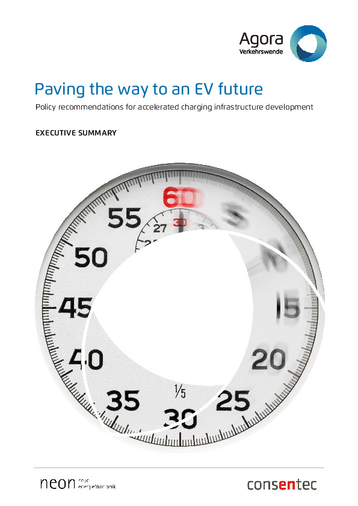This is an executive summary. The full version was first published in German in February 2022 as: Agora Verkehrswende (2022): Schnellladen fördern, Wettbewerb stärken. Finanzierungsmodelle für den Aufbau von öffentlich zugänglicher Ladeinfrastruktur für Pkw.
Although the charging infrastructure has not been a major obstacle to electromobility in Germany to date, massive and rapid expansion is needed in the coming years, especially in publicly accessible areas. With this study, we are investigating the question of which funding and financing instruments the German government can already use to set priorities in order to support the expansion of publicly accessible charging infrastructure as quickly and comprehensively as possible. The results show that the greatest potential comes from promoting fast and high-performance charging, for example at retail locations. "Charging like refueling" quite aptly describes the fundamental principle of charging in publicly accessible spaces. The priority on fast charging and competition should also be incorporated into the upcoming further development of the charging infrastructure master plan.




